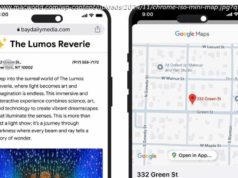In 2018, IoT security concerns will dominate the consumer and Industrial Internet spaces. See how platforms will react to security and other IoT trends.
Given how fast technology is changing, we thought it would be interesting to ask IT executives to share their thoughts on the biggest surprises in 2017 and their predictions for 2018.
Here’s article one of two of what they told us about their predictions for IoT in 2018. We’ll cover additional predictions for 2018 in a subsequent article.
IoT security will continue to dominate as a major concern, and I would expect the rise of several IoT-driven platforms to rise to the surface in an attempt to address and manage this.
With massive numbers of devices in IoT coming on networks, dealing with this proliferation by using a combination of hardware and software will be critical for realizing the benefits of interoperable IoT systems. We connect all aspects of the ecosystem so that the highest levels of unified value can be achieved.
On the other hand, product manufacturers that chose to invest more in security (either consumer or enterprise), will learn that it’s harder than they might think. Encryption or a digital signature is easy, and anybody can find a piece of code to do that, but doing it well (protecting the key well and managing it well) is another story. There are not a lot of experts across the industry who know how to do it well.
We will continue to see even the well-intentioned people, that are trying to build in security, stumble, leaving vulnerabilities that can easily be exploited. But on a positive note, we’re going to see some of the smarter and more innovative companies move faster to use IoT as a competitive advantage. More aggressive companies will soon start to get out of the pilot phase and move away from just doing IoT in production.
My hope is that there will be some adopted regulations around IoT security and compliance, otherwise, there will undoubtedly be more frequent and massive attacks. The fully-connected home will move closer to being a reality, and there will be unique solutions that address actual needs instead of just being «internet-connected».
With mobile dominating search, the next logical step would be to loop in ‘The Internet of Things.’ Marketers can use the technology to deliver their content to consumers through mobile devices. Expect to see more marketers using IoT in 2018.
It is still very early days for IoT and it is unknown who the big winners will be. Clearly, the large vendors mentioned above (IBM, ATT, HPE, Microsoft, Cisco) are all jockeying for position, trying to convince end users to work with them and buy what they sell. However, this is not an easy decision, because there are too many variables when trying to solve an IoT problem. Once an end user finds the right application(s) that are perfect for their IoT environment, the next step is to build the infrastructure around it. Because there are so many options and very little standardization on the app front, end users are looking for help to figure this all out. The winners in 2018 will be the IT services companies that truly can understand the full picture for each customer and make recommendations that aren’t influenced by one particular vendor’s products. The most likely winners are large IT consultants like Accenture, Deloitte or Infosys, or integrators like CDW, Dimension Data, and Presidio. As the market matures, and there is increased consolidation or standardization on the application front, it’ll be easier for end users to navigate their way. For now, many businesses will need advice from independent third parties.
The momentum of new IoT devices entering the market, alongside the growing consumer awareness and desire for smart home devices will continue and gain speed in 2018. The focus on smart home growth has primarily been on entertainment or security. As these devices are entering more homes, renters and homeowners will start to grow their systems by adding other smart home features, such as lighting and temperature control. New types of services leveraging smart home products will arise, as we see increased interest from stakeholders like insurance companies, who are combining the benefits of smart home-enabled safety and security with their existing services.
One of the barriers to smart home adoption has been Z-Wave SmartStart is a new function that will support smart home growth in 2018 by simplifying device installation, for both consumers and installers. For professional installers and service providers, SmartStart devices can be preconfigured at a distribution center and only need to be powered on and mounted to work in the home system, reducing installation time and errors. For consumers, Z-Wave SmartStart standardizes the installation process using a QR code scan, so devices are ready to work after being scanned and powered on.
New device functionality and use cases will be enabled through new, more robust smart home IoT connectivity features. For example, more sensors in the home will contribute to increased data collection about home conditions, which can be leveraged for home energy management, safety, and growing insurance programs and aging in place monitoring. And, advancements in battery life and low-power connectivity will make sensors last longer to introduce new use-cases, where sensors can be more deeply integrated into a home’s infrastructure resulting in not just smart, but more intelligent homes.






